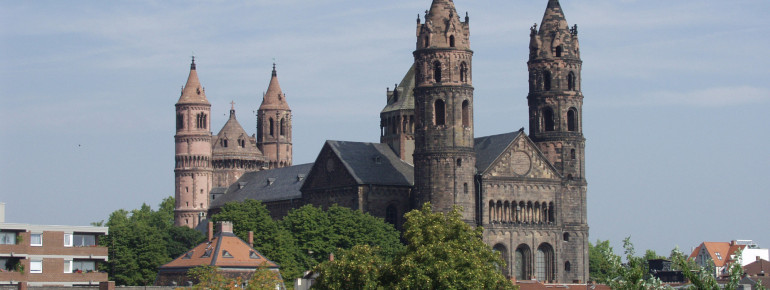Contents
Description
Cathedral St. Peter to Worms
The cathedral St. Peter to Worms, as the cathedral of Worms is actually called, is more daintily built than the Mainzer and the Speyerer cathedral and is thus the smallest of the three imperial cathedrals in the Rhineland. The cathedral is very exposed as it is built on the highest point of the inner city and reminds everyone of the heyday of Worms in the 12th and 13th century.
History Worms'
Worms is probably known to many due to the Worms Concordat, the agreement on the end of the investiture dispute in 1122. In addition, Luther had to answer to Emperor Charles V for his writings here, which eventually led to the break-up of the occidental church.
Architecture
The interior of the church is strongly dominated by the baroque high altar by Balthasar Neumann, which was built at the end of the 17th century. Since 1925, the church has also been consecrated as Basilica Minor, which underlines its special role in the surrounding area.
The cathedral today
Even today, Worms Cathedral still plays an important role in the townscape and especially in people's lives. The Domplatz, for example, is the annual venue for the Nibelungen Festival and offers a unique backdrop for this spectacle.
Historical Information
The cathedral was built from 1130 to 1181.
How to get there
By car
St. Peter's Cathedral is located in the city centre of Worms near the Rhine. You can easily get to Worms by car via the A61. Here you take the B47 in the direction of Worms. You continue on the K17 and glide into the centre of the city. The best place to park is in one of the multi-storey car parks or in the public car parks.








